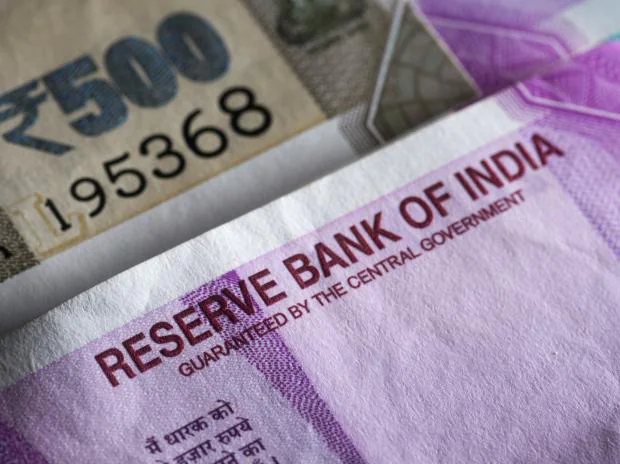[ad_1]
After weakening to a new low against the US dollar on Monday, the rupee recouped most losses as market interventions by the Reserve Bank of India (RBI) in the form of dollar sales reined in depreciation in the domestic currency, dealers said.
The rupee touched a fresh low of 80.13 per dollar in early trade as comments by Federal Reserve Chair Jerome Powell reinforcing the central bank’s commitment to rate hikes strengthened the greenback globally.
But, with the RBI stepping in to protect the rupee, the domestic currency ended the day at 79.97 per dollar. The rupee had closed at 79.87 per dollar on Friday. The RBI was said to have been aggressively selling dollars around the 80.05-80.10 level, dealers said.
In 2022, so far, the local unit has depreciated 7 per cent versus the greenback.
Speaking at the Jackson Hole Economic Symposium on Friday, Powell said that restoring price stability would likely require maintaining a restrictive policy stance for some time. The historical record cautions strongly against prematurely loosening policy.

Given that inflation in the US is currently at 8.5 per cent against the Fed’s target of 2 per cent, Powell’s comments have left traders all but convinced that interest rates in the world’s largest economy are set to climb much higher. Economists expect the federal funds target rate close to 4 per cent by March 2023 against 2.25-2.50 per cent currently.
Higher US interest rates lead to a rise in the country’s bond yields and a stronger dollar; they also reduce global investors’ appetite for assets in emerging markets, such as India.
With the US dollar index heading near the 109.50 mark on Monday – the index was at 108.20 when the Indian markets closed on Friday – the rupee weakened past the lifetime low of 80.06 per dollar that was touched on July 19.
“USD/INR spot closed 10 paise higher due to sharp rise in the US Dollar index, after the Jackson Hole meeting. But the extent of gains was capped due to aggressive intervention from the RBI and a pullback in the US Dollar index due to hawkish statements from the European Central Bank. Over the near term, we expect USDINR to move within a range of 79.60- 80.40 on spot,” said Anindya Banerjee, V-P, currency derivatives & interest rate derivatives at Kotak Securities said.
FX reserves
Ever since the Russian invasion of Ukraine in late February, the RBI has heavily drawn down its reserves to shield the rupee from excessive volatility as investors rushed to the safety of the greenback.
From $631.53 billion as on February 25, the headline reserves have fallen to $564.05 billion as on August 19, the RBI’s data showed. The central bank said earlier this month that reserves worth $573 billion were equivalent to 9.4 months of imports projected for the current financial year.

When the RBI’s reserves marked an all-time high of $642.5 billion on September 3, 2021, the central bank had said that level was close to 15 months of imports. Moreover, the RBI’s net outstanding forward purchases of the American currency have also come down sharply as the central bank has taken delivery of the greenback.
At the end of June 2022, the long forwards book was at $30.86 billion as against $65.79 billion at the end of the previous financial year. Accounting for the forwards book, total reserves are at $594.91 billion, just shy of the $600-billion mark, which many market participants felt was a level that the central bank was eager to maintain.
However, at the current juncture, currency experts do not see a cause for concern from the level of reserves with the RBI which are still among the top five in the world.
“Recently, we have seen that the FX kitty has fallen following the central bank’s intervention and revaluation of reserves other than dollar investment. We don’t think it reduces the central bank’s ammunition as apart from direct intervention there are multiple tools which it can use when required,” said Dilip Parmar, HDFC Bank’s research analyst. “So far, the rupee has been a median performer among Asian currencies and is expected to remain less volatile than many other currencies.”
Government bonds also weakened on Monday as a sharp rise in US Treasury yields following Powell’s comments eroded appetite for domestic debt, dealers said.
The yield on the 10-year benchmark paper rose 3 basis points to settle at 7.25 per cent on Monday. Bond prices and yields move inversely.
The 10-year U S Treasury yield rose to a high of 3.11 per cent earlier on Monday, while the two-year yield jumped to its highest levels in nearly 15 years, climbing to 3.4702 per cent. Higher US bond yields reduce the appeal of fixed-income instruments in emerging markets.
[ad_2]
Source link



